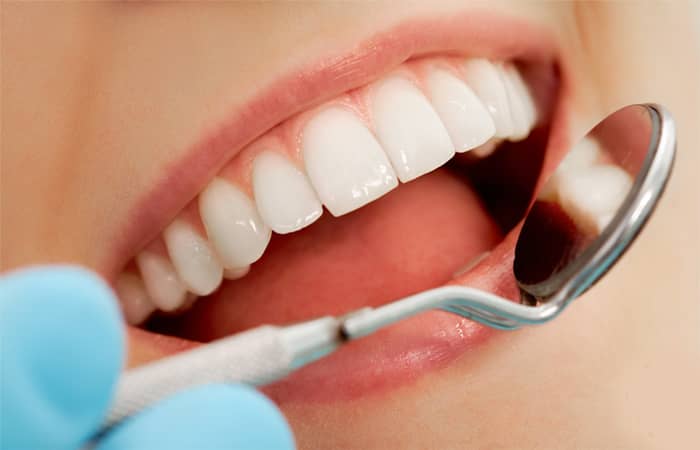A severe gum infection that can kill the jawbone and affect the gum
It is widespread but reasonably preventable for periodontitis. Usually, poor oral hygiene is the cause. Periodontitis can contribute to tooth loss. It’s a heart and lung disease health risk.
A recent Case analysis offers the following information on periodontitis incidence in the United States: 47.2% of adults 30 years of age and older have some periodontal disease. Periodontal disease rises with age, with periodontal disease in 70.1 percent of adults 65 years of age and older.
The all-cause death incidence rate ranged from 3.41 percent to 46.07 percent. Overall, there was a specific link between periodontal disorder and the risk of death for all conditions in people with CKD.
Periodontitis can be severe, so Dentist Ottawa presents you with questions to guarantee that your smile remains healthy.
What causes periodontitis?
Eventually, an accumulation of bacterial infections may cause periodontitis.
We have bacteria in all our mouths, which is safe and natural. But with secretions and other items, certain forms of bacteria combine. A coating on our teeth called plaque shapes this mix. You get rid of plaque as you wash and floss. If you don’t do so daily, however, the plaque thickens and develops tartar. A patient can’t get out of tartar by brushing—you require regular teeth cleaning.
The growth of plaque and tartar contributes to gingivitis, inflammation of the gingiva (gums). Your gums are beginning to swell and bleed. Gingivitis should be managed with proper dental hygiene, involving brushing, flossing, and professional washing. Yet untreated gingivitis causes periodontal disease.
What are periodontitis symptoms?
Healthy gums are stable, light pink, and match around the teeth. Signs and symptoms of periodontitis can include:
- Gums swollen or puffy.
- Bright red, dusty red, or purple gums
- Gums that feel tender when they are touched
- Gums that bleed out quickly
- Pink-toned toothbrush after brushing
- Spitting out blood when brushing or flossing your teeth
- Poor breathing,
- Pus between your teeth and your gums.
- Loss of teeth
- Painful chewing thing
- Fresh gaps between the teeth
- Gums that draw away from your teeth (receive), making your teeth appear longer than usual.
- Changing the way your teeth work together as you bite
How does periodontal disease-and teeth loss impact human health?
- Periodontitis, or gum disease, impacts the tissue behind the teeth, including the bone and the gum.
- It occurs as the bacteria and plaque build-up inside the tooth, and the immune system begins to respond.
- Insufficient nutrients, including vitamin C deficiency
- Genetics
- Certain medicines cause dry mouth or changes in the gum.
- Symptoms a drop in immunity, such as leukemia, HIV/AIDS, and cancer treatment
- Few disorders, such as diabetes, rheumatoid arthritis, and Crohn’s disease
- Hormonal changes, such as those associated with breastfeeding or menopause
- Recreational substance consumption, such as a smoking pot or steaming
What are the preventing measures of periodontitis?
Teeth Cleaning Ottawa believe in prevention rather than a cure.
The incredible thing is that cleaning your teeth regularly and taking care of your gums will avoid and cure gum disease, improve your oral wellbeing and help reduce your chances of contracting health complications, such as heart disease.
Follow these steps:
- Maintain good oral hygiene
- Brush your teeth twice a day
- Floss Regularly
- Use fluoride toothpaste
What are the Treatment measures for periodontitis?
We don’t recommend you to do this. Visit your dentist and get the prescription first.
- Efficient oral hygiene.
- Scaling and washing
There is a range of available medicated cleaning products and other therapies.
- Antimicrobial mouth rinse drug, such as chlorhexidine
- Antiseptic chips, microspheres, gel, and oral antibiotics, etc.
- If the given above option doesn’t work, you can follow these options.
- Surgery on the flap
- Grafts on bone and tissue
How can we diagnose periodontitis?
During a regular dental examination, the dentist would be able to spot periodontitis symptoms at an initial point. To guarantee that it doesn’t get any worse, they will control your periodontal status over time. This is why you must see a dentist for a test daily.
For measuring any pockets on your gums, your dentist may use a tiny ruler called a probe. Usually, this test becomes painless. A dentist will extract these contaminants as part of a professional cleaning, whether plaque, tartar, or both are present on your teeth. They will also take dental X-rays or refer you for more examination and care to a periodontist, a specialist in diagnosing and treating gum disease.
For more information, contact ottawa teeth whitening they correct you get rid of periodontitis disease. Visit us today.

